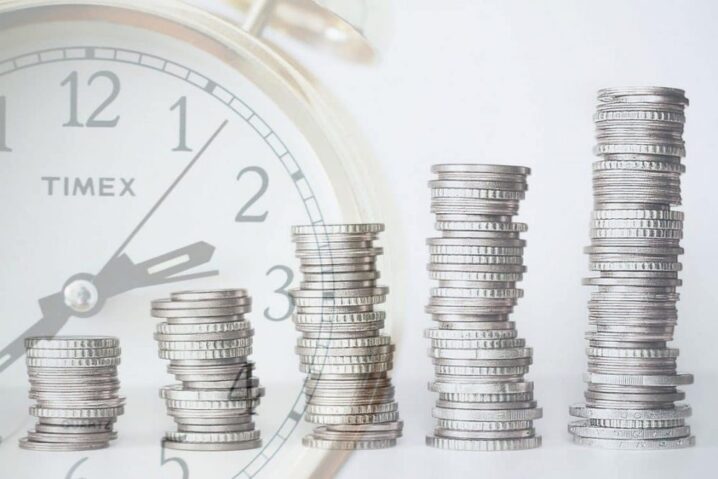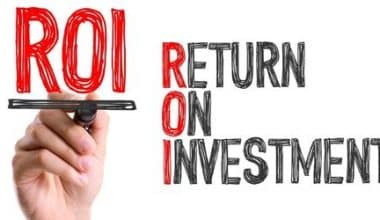When it comes to low-risk investment that offers long-term regular income, investors tend to turn to dividend stocks. This is because dividend stocks are capable of creating an everybody-wins situation that satisfies a company and its investors or shareholders. Generally, most high-yield stocks pay quarterly dividends, but the good thing is that these monthly dividend stocks yield at least 5% every four weeks. However, when investing in the best high dividend yield stocks, you might want to gather more knowledge on what dividend stocks are, the top and highest monthly stocks, and why they’re such good investments.
What Are Dividend Yield Stocks?
A dividend stock is a publically traded corporation that pays dividends to investors. Besides, these businesses are usually successful and committed to dividend payments for the foreseeable future. However, dividends can make up a substantial amount of a shareholder’s net return over time. This is even if they are less thrilling than chasing the newest high-flyer in the financial markets.
A stock dividend yield informs you how much investment returns you get compared to the stock’s current price. Buying stocks with high dividend yields can be profitable, but there are other considerations to consider.
In other words, dividend stocks regularly provide a share of earnings to investors. Typically, most American dividend stocks pay a fixed quarterly dividend, and the best ones increase it over time, creating an annuity-like income stream. Nevertheless, dividend stocks tend to be well-established companies, adding stability to your portfolio.
What is a Dividend Yield?
It is a financial ratio (return on capital) that illustrates how much a firm pays out in rewards annually compared to its stock price. It estimates a stock’s dividend-only return. However, if the dividend is not increased or decreased, the yield rises.
The dividend yield is calculated by dividing the amount paid to shareholders by the current stock price. However, the maturity of a company usually increases dividend-paying potential. Likewise, consumer and utility basic companies frequently pay greater dividend yields.
However, investors should keep in mind that greater dividend yields do not always signify better investment opportunities, as a firm’s dividend yield can rise in response to a falling stock price.
How It Works
Generally, to get dividends on a stock, you must own shares in the company through a brokerage account or an IRA. By doing this, you’ll get your dividends put directly into your provided account. when it’s time for dividend payment.
Companies pay dividends for a variety of reasons, but most commonly to share earnings with their owners, or shareholders. However, companies may also issue dividends if they cannot reinvest the funds.
In addition, dividends are normally a quarterly payment, but alternate arrangements can be made. Meanwhile, special dividends are one-time payouts that are not recurring. Nonetheless, the board of directors of a corporation will approve the dividend policy and notify investors via press release or SEC filing.
Important dates for investors:
- Date of announcement: The corporation announces its dividend plans.
- Investors who are stockholders as of this day will be paid the dividend.
- Ex-dividend date: The date when new investors will no longer receive dividends.
- Date of dividend payment:
How to Invest in Dividend Stocks
It takes time and effort to build a portfolio of individual dividend stocks, but it’s well worth it for many investors. Here’s how to get your hands on a dividend stock:
#1. Look for a Stock that Pays a Dividend
Is it difficult to find one? No, sourcing many financial websites, as well as your online broker’s site, allow you to search for dividend-paying stocks.
#2. Assess the Stock
To get a better understanding of a high-dividend stock, compare its dividend yields to those of its rivals. However, in comparison to similar companies, a high dividend yield may be a warning sign. Hence, it is worth carrying out more investigation and looking into the company and the dividend’s safety.
Afterward, look at the payout ratio, something that shows how much of the company’s earnings go to dividend payments. Generally, a payout ratio above 80%, while this varies by industry, shows the firm is paying too much in dividends. Meanwhile, in a situation whereby the dividend payout ratios reach 100%, this simply means the company is borrowing to pay dividends.
#3. Determine the Amount of Stock You Want to Purchase.
If you are the type that deals with individual stocks, you must determine how much of your portfolio each stock represents. On the other hand, if you buy 20 stocks, you can invest 5% of your portfolio in each. However, if the stock is riskier, you should buy less of it and put your money into safer investments. Nevertheless, for each dividend reinvested, you must recalculate your cost basis the price paid for the stock.
The dividend security of a dividend stock is the primary consideration. Dividend yields over 4% are suspect, and yields over 10% are risky. For example, an unsustainable dividend yield can indicate that investors are selling the stock, lowering the share price but instead increasing the dividend yield.
Best Dividend Yield Stocks
Dividend stocks give monthly and regular cash dividends to investors. Generally, dividend stocks can provide income, but the finest dividend stocks can also help you build wealth over time. Likewise, companies with a history of yearly dividend growth also provide comfort. However, when a company manages to raise its dividend year after year, despite the recession, war, market crashes, and more, it’s simply demonstrating both financial durability and shareholder dedication. This brings us to the S&P Dividend Aristocrats;
The Dividend Aristocrats
are a group of S&P 500 corporations that have increased dividends for at least 25 years. Although many of the companies on this list are household names, still, they all play important roles in the American economy. And while they’re spread across the market, they all share one thing in common: a commitment to consistent dividend increases.
The S&P 500 Dividend Aristocrats ETF (NOBL) makes it simple for investors to participate in companies that have regularly paid dividends to shareholders.
However, certain conditions must be completed in order to be included in the dividend aristocrat group:
- Companies must be a member of the S&P 500.
- Must have increased the annual total dividend per share for at least 25 straight years.
- Have an average daily trading value of at least $5 million.
- Must have a float-adjusted market capitalization of at least $3 billion.
There are 65 firms on the list of dividend aristocrats as of March 2022 including well-known brands like
- Walmart (WMT)
- International Business Machines (IBM)
- Coca-Cola (KO)
- Walgreens Boots Alliance (NYSE: WBA)
- Target (NYSE: TGT)
- NextEra Energy (NEE)
- Caterpillar (CAT)
- Realty Income (O)
- A.O. Smith (AOS)
- Illinois Tool Works (ITW)
- Expeditors International of Washington (EXPD).
- Church & Dwight (CHD)
- Expeditors International of Washington (EXPD)
- Albemarle (ALB)
Things to Look for in Dividend Stocks
Generally, if you’re new to dividend investing, it is essential to learn what dividend stocks are as well as why they seem to be a good investment. Understanding dividends can help you locate great dividend stocks that best suit your portfolio. Nevertheless, below are a few of the things you might need to look for and consider before investing in a stock:
#1. Payout Ratio
Dividends paid per share divided by earnings per share give a payout ratio. That is, what percentage of earnings a stock distributes to shareholders. A payout ratio of 60% or less indicates a dividend that is sustainable.
#2. Raises history
When a company raises its dividend, it is highly positive. Especially when it continues to do so during recessions and other difficult economic periods like the COVID-19 epidemic.
#3. Consistent revenue and profits growth
When shopping for long-term dividend stocks, seek companies that are stable. Meanwhile, unpredictable revenue (up one year, down the next) and earnings can indicate difficulties.
#4. Durable competitive advantages:
This is one crucial factor. However, a competitive advantage can be a proprietary technology, high entry barriers, high customer switching costs, or a strong brand identity, to mention a few.
#5. High Yield
Obviously, a higher yield is preferred, but only if the other four requirements are met. Therefore, compare dividend yields after ensuring the business is healthy and the payout is stable.
Highest Monthly Dividend Yield Stocks
Unlike novice yield searchers, buy-and-hold dividend growth investors know to trade for income requires patience. Even companies with low initial yields can offer greater total returns over time. Significantly, regular dividend increases raise the yield on a cost basis. So, if you hold on long enough, your original 1% yield can treble.
However, below is a list of the 10 highest monthly yield dividend stocks in the Dow Jones Industrial Average
| TICKER SYMBOL | COMPANY | ANNUAL DIVIDEND | DIVIDEND YIELD |
| IBM | International Business Machines | $6.56 | 5.11% |
| VZ | Verizon | $2.56 | 5.02% |
| DOW | Dow Inc. | $2.80 | 4.42% |
| WBA | Walgreens boots Alliance | $1.91 | 4.09% |
| MMM | 3M | $5.96 | 4.04% |
| MRK | Merck | $2.76 | 3.46% |
| CVX | Chevron | $5.68 | 3.42% |
| AMGN | AMGEN | $7.76 | 3.28% |
| INTC | Intel | $1.46 | 3.02% |
| KO | Coca-Cola | $1.76 | 2.91% |
Best High Dividend Yield Stocks
The following 25 high-dividend stocks are listed by dividend yield. However, the dividend indicated is per quarter, not annually.
| Symbol | Company Name | Dividend Yield |
| MO | Altria Group Inc | 6.88% |
| UVV | Universal Corp | 5.37% |
| PM | Philip Morris International Inc | 5.32% |
| OKE | ONEOK Inc | 5.29% |
| LYB | LyondellBasell Industries NV | 4.39% |
| PSX | Phillips 66 | 4.25% |
| NWE | NorthWestern Corp | 4.16% |
| MMM | 3M Co | 4.00% |
| EIX | Edison International | 3.99% |
| NKSH | National Bankshares Inc | 3.97% |
| SAFT | Safety Insurance Group Inc | 3.96% |
| ALE | ALLETE Inc. | 3.88% |
| VLO | Valero Energy Corp | 3.86% |
| SR | Spire Inc | 3.81% |
| LAMR | Lamar Advertising Co | 3.78% |
| KMB | Kimberly-Clark Corp | 3.77% |
| CVX | Chevron Corp | 3.48% |
| PFG | Principal Financial Group Inc | 3.48% |
| DLR | Digital Realty Trust Inc | 3.44% |
| HAS | Hasbro Inc. | 3.41% |
| MRK | Merck & Co Inc | 3.36% |
| BOH | Bank of Hawaii Corp | 3.33% |
| OMC | Omnicom Group Inc | 3.29% |
| EVBN | Evans Bancorp Inc | 3.26% |
What to Look Out For Dealing with Stocks Dividend
Here, we are talking about what could possibly affect your yielding when you invest in a stock. This is to prepare you ahead of a potential occurrence
Taxes
Have it in mind that dividend income from taxable brokerage accounts is taxed at normal income rates. However, a standard or Roth IRA can help you avoid this.
Dividends Reduction
Occasionally, firms are obliged to reduce or cancel dividends owing to financial issues. That’s why you should be wary of high dividends. In addition, a high yield may be a hint that investors expect the corporation to reduce the payout at any time.
It’s possible to avoid picking the wrong firm by investing in a diversified investment account. With many banks compelled to slash dividends during the financial crisis of 2008 and 2009, the S&P 500 index dividends per share fell for the first time in 50 years. Likewise, dividends plummeted by 21% during that time period. However, they have now surpassed their previous high.
Interest Rates Rising
Increasing rates may potentially threaten dividend-paying products and ETFs. As rates rise, investors may switch from high-yield stocks to bonds or other assets, this however leading stock prices to decline.
High Dividend Yield Stocks 2023
Below are a few of the high-yield dividend stocks to buy:
- AllianceBernstein Holding LP (AB)
- Altria Group Inc. (MO)
- EPR Properties (EPR)
- FS KKR Capital Corp. (FSK)
- Gerdau SA (GGB)
- International Business Machines Corp. (IBM)
- Oneok Inc. (OKE)
- Prospect Capital Corp. (PSEC)
- W. P. Carey Inc. (WPC)
Conclusion
A stock dividends yield can have a long-term impact on your wealth or investment. Likewise, they can be reinvested to boost your total return on capital. Meanwhile, you can consider investing in dividend-paying companies through a low-cost fund or ETF in a tax-advantaged account.
Dividend Yield Stocks FAQs
What is a good dividend yield?
Generally, dividend yields of 2% to 4% are considered strong, and anything above 4% can be a great buy—but also a risky one. However, when comparing stocks, it’s important to look at more than just the dividend yield.
Does Coca Cola pay monthly dividends?
Coca-Cola does NOT pay a monthly dividend. Of course, there are ways to get dividends every month and there are few stocks that pay dividend yield monthly
Are dividends taxed?
Yes – the IRS considers dividends to be income, so you usually need to pay taxes on them. Even if you reinvest all of your dividends directly back into the same company or fund that paid you the dividends, you will pay taxes as they technically still passed through your hands
How much do I need to make $100 a month in dividends?
To make $100 a month in dividends you need to invest between $34,286 and $48,000, with an average portfolio of $40,000. In other words, the exact amount of money you will need to invest to create a $100 monthly dividend income depends on the dividend yield of the stocks.
Related Articles
- DIVIDEND STOCKS: Understanding Dividend Stocks and How to Invest
- Dividend Yield: Meaning, Detailed Examples, Formula & Free Investor Tips
- High Dividend Mutual Funds: Best 2023 Options (Updated)
- Dividend Mutual Funds: Definition, How They Work, Pros & Cons
- ETF Portfolio: 7+ Best Dividend Portfolios in 2023






